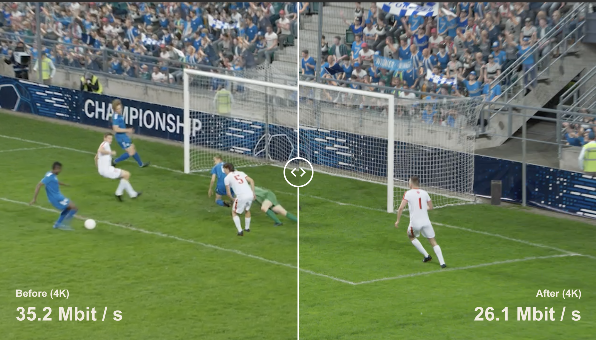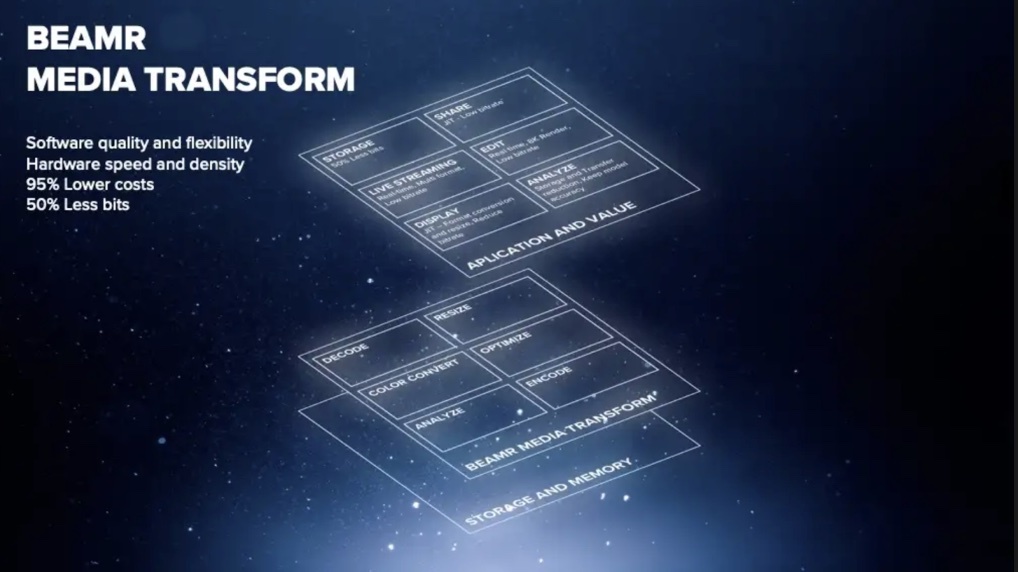This year at IBC 2024 in Amsterdam, we are excited to demonstrate Live 4K p60 optimized streaming with our Content-Adaptive Bitrate (CABR) technology on NVIDIA Holoscan for Media, a software-defined, AI-enabled platform that allows live video pipelines to run on the same infrastructure as AI. Using the CABR GStreamer plugin, premiered at the NAB Show earlier this year, we now support live, quality-driven optimized streaming for 4Kp60 video content.
It is no secret that savvy viewers are coming to expect the high-quality experience of 4K Ultra-High-Definition streamed at 60 frames per second for premium events. What started with a drizzle a few years back has become the high end norm for recent events such as the 2024 Olympics, where techies were sharing insights on where it could be accessed.
Given the fact that 4K means a whopping four times the pixels compared to full HD resolution, keeping up with live encoding of 4K at 60 fps can be quite challenging, and can also result in bitrates that are too high to manage.
One possible solution for broadcasters is to encode and transmit at 1080p and rely on the constantly improving upscalers available on TVs to provide the 4K experience, but this of course means they cannot control the user experience. A better solution is to have a platform that is super fast, and can create live 4Kp60 encodes, which combine excellent quality with an optimization process that minimizes the required bitrate for transmission.

Comparison of 4K Live video before and after optimization
Beamr CABR on Holoscan for Media offers exactly that, by combining the fast data buses and easy-to-use architecture of Holoscan for Media with Beamr hardware-accelerated, quality-driven optimized AV1 encoding. Together, it is possible to stream super efficient, 4K, lower bitrate encodes at top notch quality.
Content Adaptive Bitrate encoding, or CABR, is Beamr’s patented and award-winning technology that uses a quality measure to select the best candidate with the lowest bitrate and the same perceptual quality as a reference frame. In other words, users can enjoy 30-50% lower bitrate, faster delivery of files or live video streams and improved user experience – all with exactly the same quality as the original video.
In order to achieve aggressive bitrates which are feasible for broadcast of live events, we configure the system to use AV1 encoding. The advanced AV1 format has been around since 2018. However, its full potential has not been fully realized by many players in the video arena. AV1 is raising the bar significantly in comparison to previous modern codecs, such as AVC (H.264) or HEVC (H.265), in terms of efficiency, performance with GPUs and high quality for real-time video. When combined with CABR – AV1 is offering up even more. According to our tests, AV1 can reduce data by 50% compared to AVC and by 30% compared to HEVC. We also showed that CABR optimized AV1 is beneficial for machine learning tasks.
Putting all three of these technologies together, namely deploying Holoscan for Media with the Beamr CABR solution inside, which in turn is using NVIDIA’s hardware-accelerated AV1 encoder, provides a platform that offers spectacular benefits. With the rise in demand for high-quality live streaming at high resolution, high fps and manageable bitrates, while keeping an eye on the encoding costs – this solution is definitely an interesting prospect for companies looking to boost their streaming workflows.




